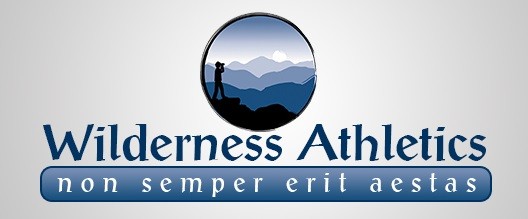I’m going to tell you something that you won’t like. CrossFit requires a lot of running. While it is the most “functional” movement that a person can do, it seems like nearly every Crossfitter hates running – to the point that most are willing to substitute it with nearly any alternative. Just read the comments whenever HQ posts as the WOD “Run 5k” or “Run 10k”.
If you want to get good at CrossFit, however, you need to embrace running. During the first six months of 2013, running was programmed in 22 different WODs. That was 16% of the workouts, The close second-place movement was Pull-ups, everybody’s favorite, which occurred over 14% of the time. Sometimes, we get distracted with the complex moves and high-skill activities of CrossFit, that we neglect to get better at the most basic ones which will actually improve our WOD times the most.
As part of the upcoming programming on Wilderness Athletics, I will be making specific notations for those who are interested in getting better at competitive CrossFit. This will be referred to as “The Fastest Way to Rx”, because the intention is to get novice Crossfitters to stop scaling, and to finally face any WOD they encounter with the knowledge that they can complete it. And once you know that you can complete a WOD as Rx’d, the next time one similar appears, you will have no problem hitting it with the utmost intensity.
The Unknown and the Unknowable
There is an interesting paradox with competitive CrossFit. While the combination of activities, the timeframe, and the volume might be unknown and unknowable, there are specific things in the CrossFit world of which we can be certain. For example; There will be Muscle-ups during the Open, ditto for Snatches and Box jumps. Kettlebell swings appear frequently at the mainsite level (7.3% of WODs), but are seldom at the Regional level, which will instead feature a ton of Handstand push-ups or Chest-to-bar pull-ups. The quantity of Wall balls is almost always 150, Box jumps are 24 or 20″, and Rowing is a multiple of 250m. Therefore, you need to get good at what you know you will face.
Another interesting thing about CrossFit – you don’t need to be as strong as you think! For years, the need for strength has been written about, but it’s absolute value may be over-emphasized, or at least misunderstood. For example, at least up to (and including) the Open-level, you can complete every WOD with the following strength numbers:
For men:
115# Shoulder press
180# Snatch
275# Front squat
255# Clean
300# Back squat
400# Deadlift
These are not extreme numbers, and should be within reach of any recreational lifter. In fact, the slow lifts (Press, Squat, and Deadlift) are not very high at all. So once you get them in place, you really need to work on technique to nail the Olympic lifts. They are usually much harder to develop, so I would recommend using your time polishing your form, but again, only after you have a strong foundation. There are several beginner’s routines out there, but Starting Strength, Grey Skulls LP, and Madcow are probably the most popular.
Note: These are the minimums required to complete mainsite WODs as Rx’d. They are not ideal, nor are they balanced numbers. More strength will most likely translate into better times, but the point is – don’t get caught up in the hamster-wheel of strength development for CrossFit. Once you can lift these numbers, start hammering the WODs without scaling. From then on, your conditioning will be the biggest limiting factor. Remember, get good, then get fast, then get fancy.
